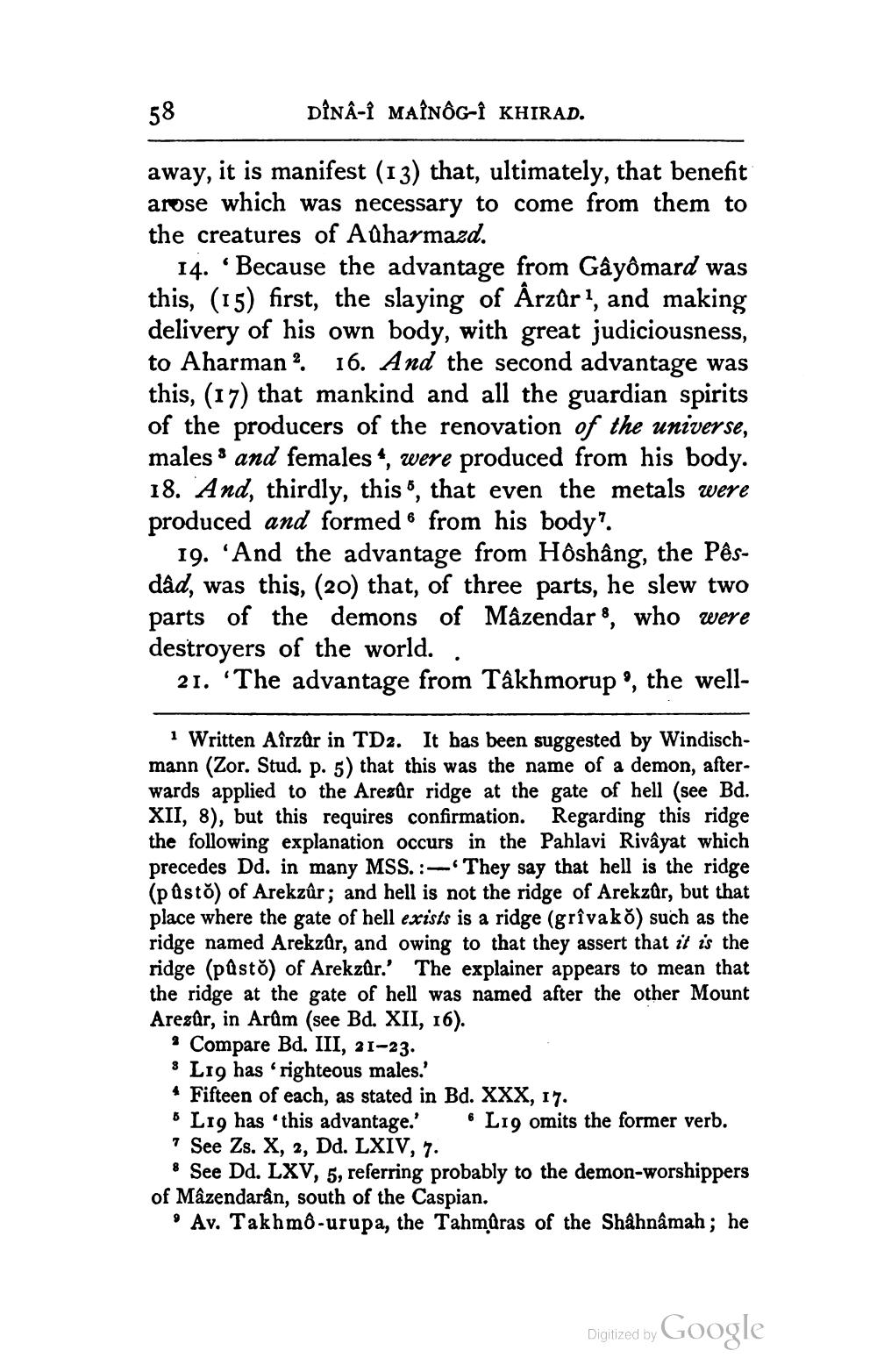________________
58
DÎNA-Î MAÎNÔG-I KHIRAD.
away, it is manifest (13) that, ultimately, that benefit arose which was necessary to come from them to the creatures of Atharmazd.
14. Because the advantage from Gâyômard was this, (15) first, the slaying of Arzûr, and making delivery of his own body, with great judiciousness, to Aharman ? 16. And the second advantage was this, (17) that mankind and all the guardian spirits of the producers of the renovation of the universe, males 8 and females “, were produced from his body. 18. And, thirdly, this ", that even the metals were produced and formed 6 from his body?.
19. 'And the advantage from Hôshầng, the Pêsdâd, was this, (20) that, of three parts, he slew two parts of the demons of Mâzendars, who were destroyers of the world..
21. 'The advantage from Tâkhmorup', the well
1 Written Aîrzûr in TD2. It has been suggested by Windischmann (Zor. Stud. p. 5) that this was the name of a demon, afterwards applied to the Aresûr ridge at the gate of hell (see Bd. XII, 8), but this requires confirmation. Regarding this ridge the following explanation occurs in the Pahlavi Rivâyat which precedes Dd. in many MSS. :- They say that hell is the ridge (pûsto) of Arekzûr; and hell is not the ridge of Arekzûr, but that place where the gate of hell exists is a ridge (grîvako) such as the ridge named Arekzûr, and owing to that they assert that it is the ridge (püsto) of Arekzûr.' The explainer appears to mean that the ridge at the gate of hell was named after the other Mount Arezûr, in Arům (see Bd. XII, 16).
. Compare Bd. III, 21-23. 8 L19 has righteous males.' 4 Fifteen of each, as stated in Bd. XXX, 17. 5 L19 has this advantage.' 6L19 omits the former verb. * See Zs. X, 2, Dd. LXIV, 7.
& See Dd. LXV, 5, referring probably to the demon-worshippers of Mâzendarân, south of the Caspian.
Av. Takhmô-urupa, the Tahmūras of the Shâhnâmah; he
Digitized by Google




